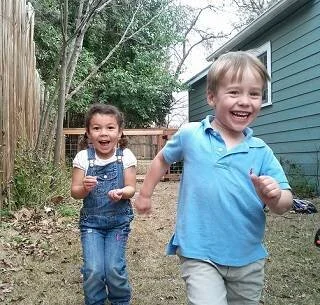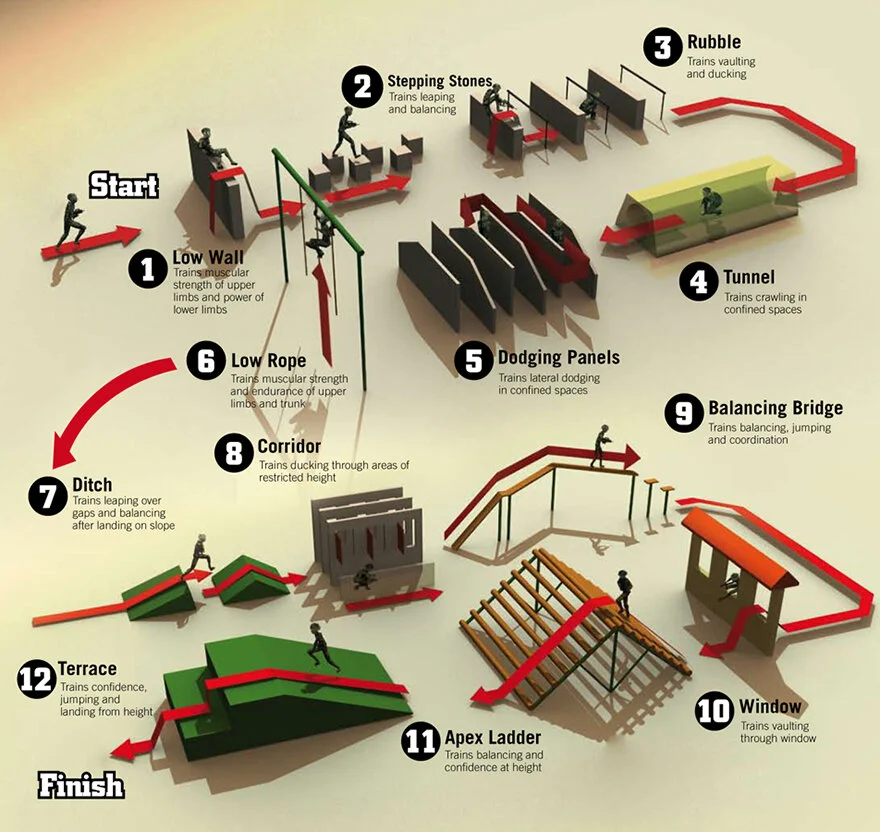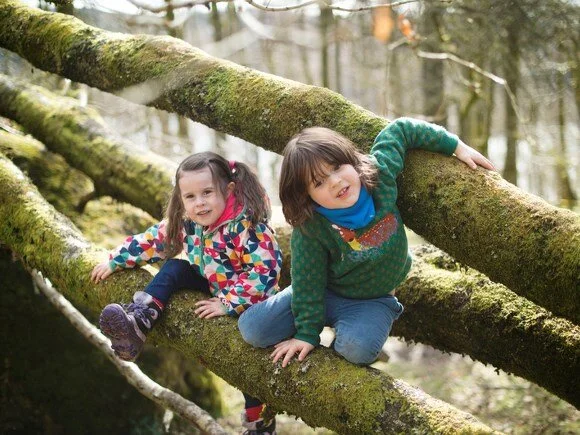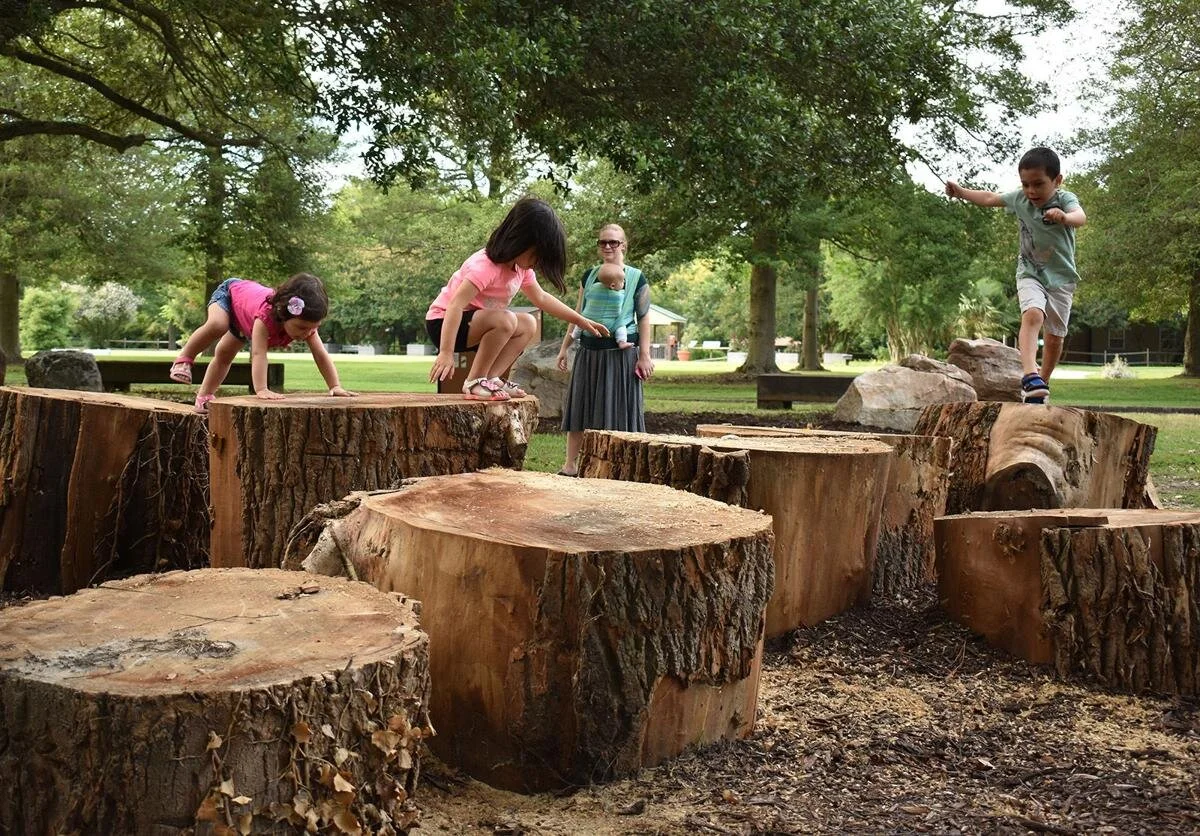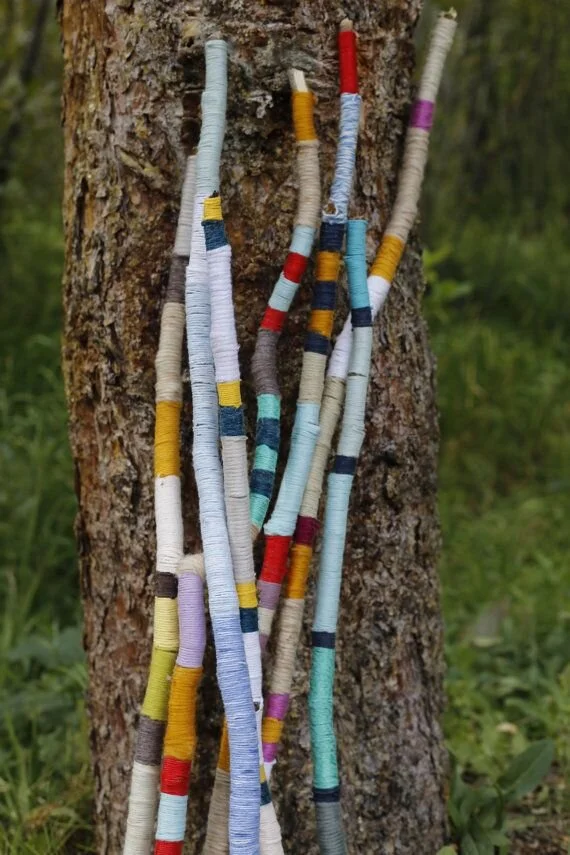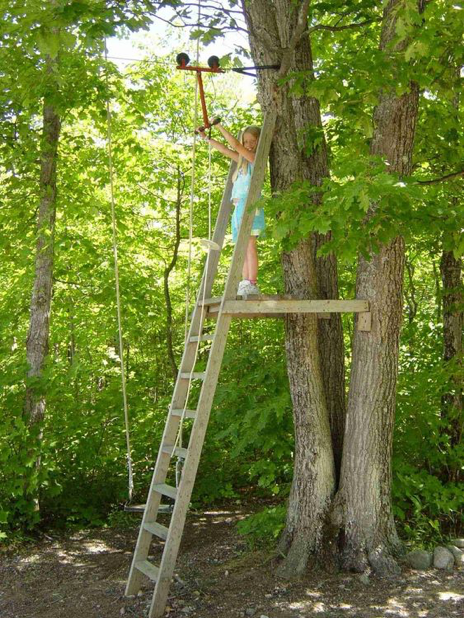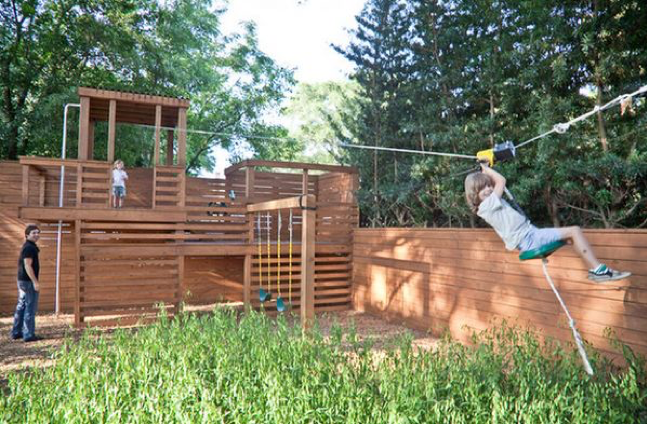Kids need to be connected to nature for their well-being and to learn resilience. There have been many studies that show that being outside brings a mental sigh-of-relief to most people, including kid’s. Its a way to de-compress. To just be with yourself for a minute. Kids also need to play - it’s how they learn physical skills, learn to use their imagination and get their excess energy out.
In some of my Design Concepts for young families I suggest what I call a “Kid’s Adventure Pathway” - a way for kids to “run around the yard” in a space designed for them, without interfering with “the grown-ups” or wrecking the lawn. The Adventure Path allows kids to explore the “wilder” parts of the yard - it may even be partially screened by some of the plantings. Since its theirs, they can contribute to the design, decide what they think would be fun, and even collect stuff to add to it (like a birch log from a hike that they might take with Mom and Dad or a teepee made from gathered sticks).
The Kid’s Adventure Path can also be an opportunity for practicing physical skills, so why not incorporate an obstacle course into the Adventure Path? You can take some of the elements of a “real” obstacle course and re-invent them. Depending on where the path ends up being located, you can use these obstacle course-like elements as part of the way to get from A to B. If the path goes up a hill, use a ladder element. If the path goes over a swale, use a balance bridge. If the path goes down and then up again, build a zig-zag bridge across it as an alternate way to get there.
Obstacle Course
Different elements of an obstacle course train different physical skills
Obstacle course elements provide real fitness training as well as play. You can play on any part of the course individually depending on your mood. Kids can time their performance and improve over time. Or they can use it to compete with their friends. An obstacle course can be a group activity or an individual activity - most of all, they’re fun!
Elements can be constructed as “DIY” project or by a good carpenter/contractor. Logs are a great element to use, since logs can often be gotten free from tree companies who are working in the area. If you ask, they will often cut the logs into different sizes for you.
Typical components of an obstacle course made to be “kid-friendly”
Here are some examples of “natural” ways you could create obstacle course elements – emphasizing balance, confidence, climbing, strength, overall fitness and fun.
String some ropes and let them make their way through a maze
Slackline
… seems to be fun and accessible to all ages – you just need some trees. Slacklines could be installed as a way to get from one location to another within the back yard.
Add a music and noise-making wall or suspend a hula hoop decorated with ribbons
Wrap some fallen branches in yarn to use as totems
